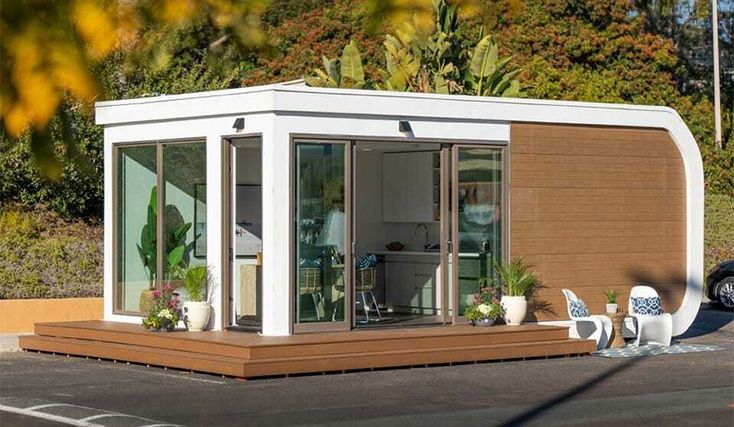Accessory Dwelling Units (ADUs) are becoming increasingly popular as a solution to address housing shortages and provide flexible living arrangements. Prefabricated ADUs, in particular, offer a range of benefits that make them an attractive option for small spaces. Prefabricated ADUs are designed with space optimization in mind. The units are often compact yet functional, making the most of every square foot available.
The design of prefab ADUs often incorporates multi-functional spaces, such as furniture that can be folded or transformed, allowing for flexible use of limited space. Prefabricated ADUs are manufactured off-site in controlled environments, allowing for faster construction compared to traditional on-site methods. That can be crucial, especially in areas facing urgent housing needs.
Prefab ADUs provide an option for gradual expansion of living space. Homeowners can start with a smaller unit and later add more modules or structures if needed.
When considering prefab Accessory Dwelling Units (ADUs), there are several vital considerations to keep in mind. ADUs, also known as granny flats, backyard cottages, or in-law suites, are secondary housing units on a residential property. Prefabricated ADUs have gained popularity due to their speed of construction, cost-effectiveness, and flexibility. Here are key considerations:
Local zoning regulations
Check local zoning laws and building codes to ensure that prefab ADUs are allowed in your area. Regulations can vary significantly, and compliance is crucial to avoid legal issues.
Permitting process
Understand the permitting process for prefab ADUs in your jurisdiction. It includes obtaining the necessary permits for construction, electrical, plumbing, and other relevant aspects. Some prefab units come with engineering and permit assistance.
Site conditions
Assess the condition of your property and consider any site-specific challenges. These include the topography, soil conditions, and existing structures. Some prefab units may require a level foundation, so understanding your site conditions is essential.
Utilities and infrastructure
Ensure that your property can support the additional utility requirements of an accessory dwelling unit prefab, including water, sewer, electricity, and gas. Determine how connections will be made and whether any upgrades are necessary.
Design and customization
Evaluate the design options and customization features offered by prefab ADU manufacturers. Consider your specific needs, such as the number of bedrooms, layout, and any additional features. Some manufacturers provide a range of designs and customization options.
Budget and financing
Establish a clear budget for the entire project, including the cost of the prefab unit, site preparation, permits, utilities, and any additional features. Explore financing options, including loans or grants that may be available for ADU construction.
Installation and construction time
One of the advantages of prefab ADUs is their quicker construction time compared to traditional construction. However, the actual timeline can vary. Understand the installation process and inquire about the estimated construction time.
Quality and materials
Assess the quality of materials used in the prefab unit. Consider factors such as insulation, energy efficiency, and the overall durability of the structure. Some prefab units may have different material options.
Warranty and maintenance
Inquire about the warranty provided by the prefab ADU manufacturer. Focus on the terms and conditions of the warranty. Also, consider the long-term maintenance costs and requirements.
Neighborhood compatibility
Consider the aesthetics and size of the prefab ADU in relation to your existing property and neighborhood. Some jurisdictions may have guidelines to ensure that the ADU fits in with the surrounding community.
Environmental impact
Evaluate the environmental impact of the prefab ADU. Some units may be designed with sustainability in mind, incorporating energy-efficient features and environmentally friendly materials.
By carefully considering these factors, you can make informed decisions when planning and implementing a prefab ADU on your property. Consulting with local authorities, professionals, and prefab manufacturers can provide valuable insights tailored to your specific situation.


Comments are closed.